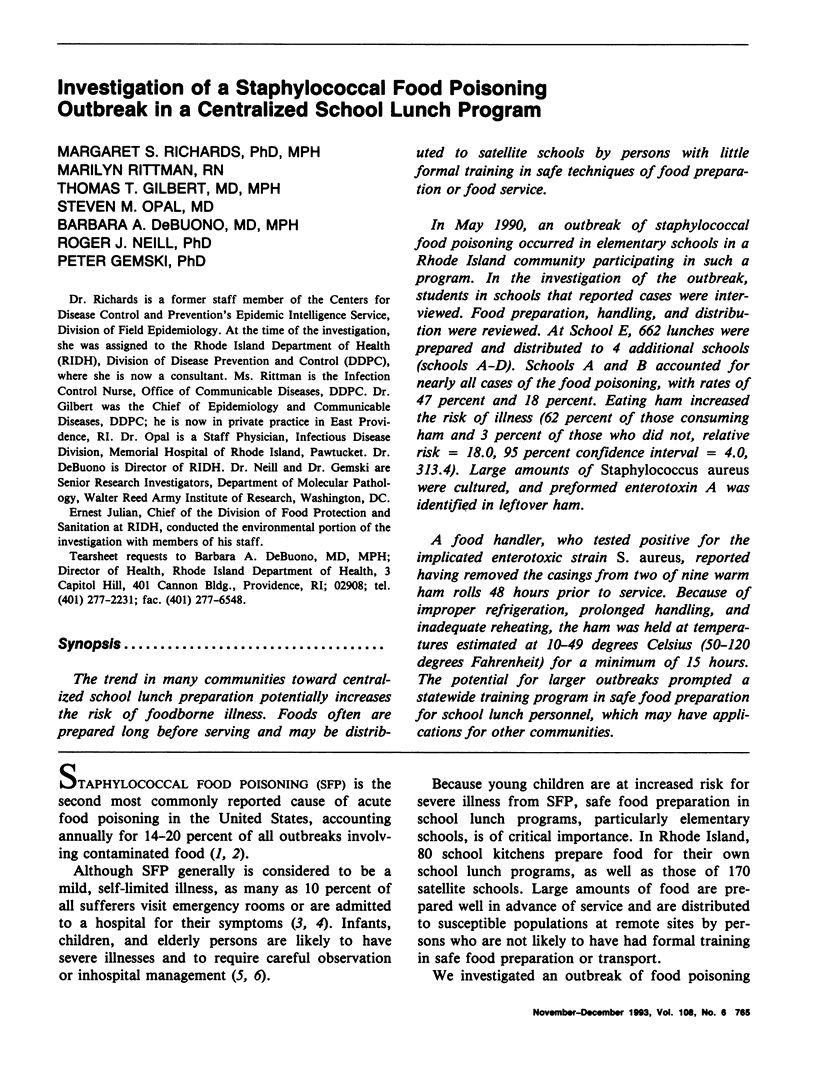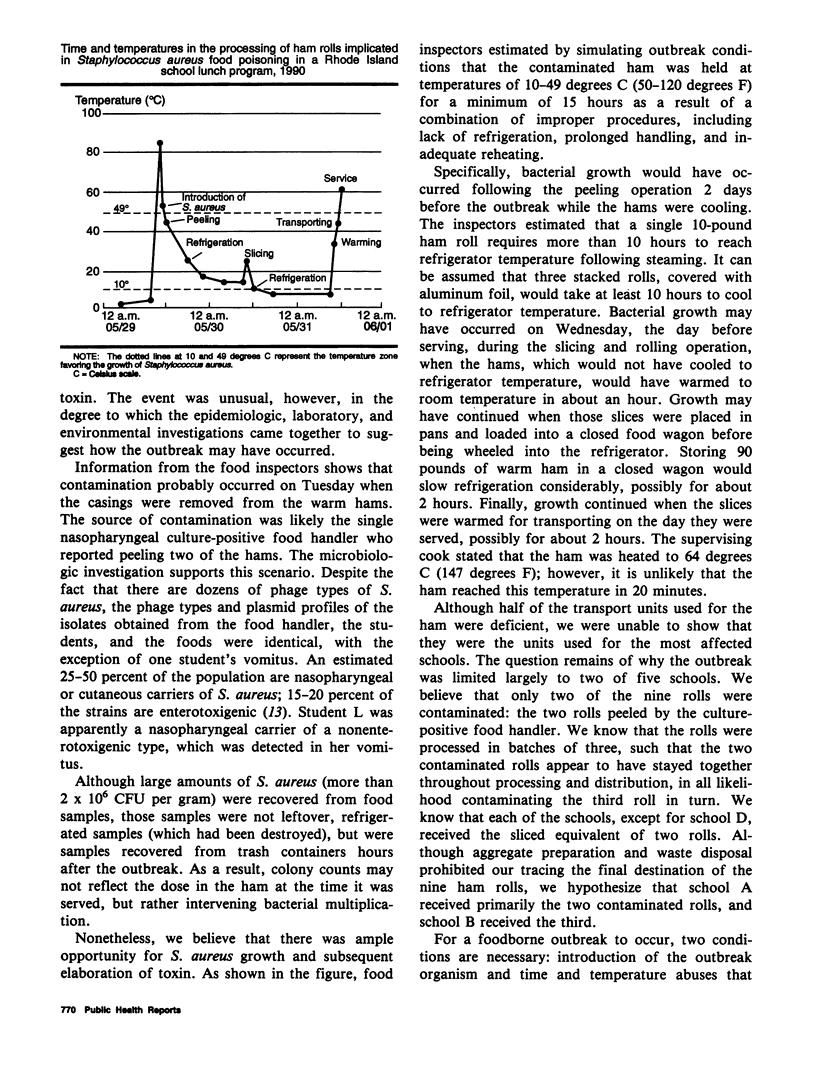Abstract
The trend in many communities toward centralized school lunch preparation potentially increases the risk of foodborne illness. Foods often are prepared long before serving and may be distributed to satellite schools by persons with little formal training in safe techniques of food preparation or food service. In May 1990, an outbreak of staphylococcal food poisoning occurred in elementary schools in a Rhode Island community participating in such a program. In the investigation of the outbreak, students in schools that reported cases were interviewed. Food preparation, handling, and distribution were reviewed. At School E, 662 lunches were prepared and distributed to 4 additional schools (schools A-D). Schools A and B accounted for nearly all cases of the food poisoning, with rates of 47 percent and 18 percent. Eating ham increased the risk of illness (62 percent of those consuming ham and 3 percent of those who did not, relative risk = 18.0, 95 percent confidence interval = 4.0, 313.4). Large amounts of Staphylococcus aureus were cultured, and preformed enterotoxin A was identified in leftover ham. A food handler, who tested positive for the implicated enterotoxic strain S. aureus, reported having removed the casings from two of nine warm ham rolls 48 hours prior to service. Because of improper refrigeration, prolonged handling, and inadequate reheating, the ham was held at temperatures estimated at 10-49 degrees Celsius (50-120 degrees Fahrenheit) for a minimum of 15 hours. The potential for larger outbreaks prompted a statewide training program in safe food preparation for school lunch personnel, which may have applications for other communities.
Full text
PDF






Selected References
These references are in PubMed. This may not be the complete list of references from this article.
- Birnboim H. C., Doly J. A rapid alkaline extraction procedure for screening recombinant plasmid DNA. Nucleic Acids Res. 1979 Nov 24;7(6):1513–1523. doi: 10.1093/nar/7.6.1513. [DOI] [PMC free article] [PubMed] [Google Scholar]
- Cohen M. L. Staphylococcus aureus: biology, mechanisms of virulence, epidemiology. J Pediatr. 1986 May;108(5 Pt 2):796–799. doi: 10.1016/s0022-3476(86)80747-8. [DOI] [PubMed] [Google Scholar]
- Holmberg S. D., Blake P. A. Staphylococcal food poisoning in the United States. New facts and old misconceptions. JAMA. 1984 Jan 27;251(4):487–489. [PubMed] [Google Scholar]
- Neill R. J., Fanning G. R., Delahoz F., Wolff R., Gemski P. Oligonucleotide probes for detection and differentiation of Staphylococcus aureus strains containing genes for enterotoxins A, B, and C and toxic shock syndrome toxin 1. J Clin Microbiol. 1990 Jul;28(7):1514–1518. doi: 10.1128/jcm.28.7.1514-1518.1990. [DOI] [PMC free article] [PubMed] [Google Scholar]
- Reina J., Salva F., Alomar P. Enterotoxin production by strains of Staphylococcus aureus isolated from clinical specimens. J Clin Pathol. 1989 Feb;42(2):217–218. doi: 10.1136/jcp.42.2.217. [DOI] [PMC free article] [PubMed] [Google Scholar]
- Zierdt C. H., Robertson E. A., Williams R. L., MacLowry J. D. Computer analysis of Staphylococcus aureus phage typing data from 1957 to 1975, citing epidemiological trends and natural evolution within the phage typing system. Appl Environ Microbiol. 1980 Mar;39(3):623–629. doi: 10.1128/aem.39.3.623-629.1980. [DOI] [PMC free article] [PubMed] [Google Scholar]


